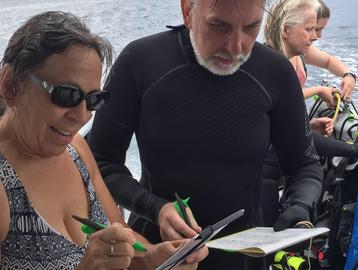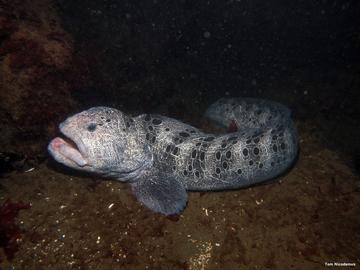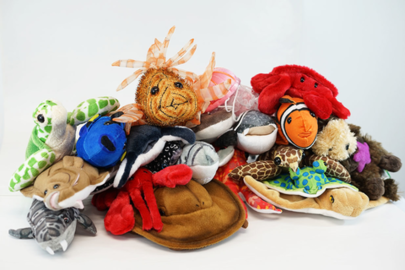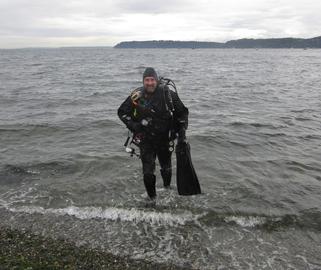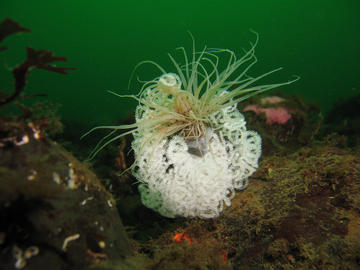This month, REEF is proud to highlight one of our outstanding Conservation Partners: Pura Vida Divers in West Palm Beach, Florida. REEF Conservation Partners are active organizations and dive shops dedicated to protecting marine environments. As valued REEF ambassadors, they teach fish ID classes, host survey dives, organize volunteer events and more. With partners across the country and beyond, there are plenty of opportunities to engage.
Meet February's Fish of the Month, the Wolf-eel (Anarrhichthys ocellatus)!
They say there are plenty of fish in the sea, and when you adopt one of REEF’s Conservation Creatures, you are helping to protect those species for the future. REEF Conservation Creatures are stuffed animals depicting iconic marine species from REEF’s Volunteer Fish Survey Project regions. These marine creatures highlight the diversity of ocean ecosystems and encourage understanding and respect for marine life.
Since 1993, more than 16,000 volunteers have conducted at least one REEF survey as part of the Volunteer Fish Survey Project. Today, the survey database totals more than 248,000 surveys. A small group of highly dedicated surveyors known as the Golden Hamlet Club have contributed significantly to this total by conducting 1,000+ REEF surveys. Congratulations to Chuck Curry, the newest member of the Golden Hamlet Club! Read on to learn more about Chuck and his involvement with the Volunteer Fish Survey Project.
REEF members are the heart of our grassroots marine conservation programs. A diverse community of divers, snorkelers, and ocean enthusiasts support our mission to conserve marine environments worldwide.
Fire up your computers and mobile devices! It's time for more of your favorite online REEF Fishinars, our special brand of free, interactive, live webinars. You can join us from your home, sitting in the car or coffeeshop, or anywhere you have an internet connection. More info about our Fishinars and how to register can be found here.
These REEF members are moving up in the world! This past month we've had a number of Experience Level advancements by folks who have been busy conducting surveys and learning how to identify fish. This month's achievements are:
Hawaii (HAW)
- Lynn Fulks - Level 2
California (PAC/CAL)
This work was presented at the OCEANS19 meeting, and was a result of research done as part of the Grouper Moon Project. More than 800 species of fish produce sound including Red Hind (Epinephelus guttatus), Nassau Grouper (E. striatus), Black Grouper (Mycteroperca bonaci), and Yellowfin Grouper (M. venenosa). Their sounds can be used to monitor these fish and may be a means to estimate abundance if parameters such as source levels, detection probabilities, and cue rates are known.
This paper summarizes research done as part of the Grouper Moon Project to understand sound made by several species of grouper. Many fishes produce calls during spawning that aid in species and mate recognition. When multiple sound-producing species inhabit an area, the detection range may decrease and limit call function. Acoustic partitioning, the separation of calls in time, space, or spectral frequency, can minimize interference among species and provide information about fish behavior and ecology, including possible response to increasing anthropogenic noise.

